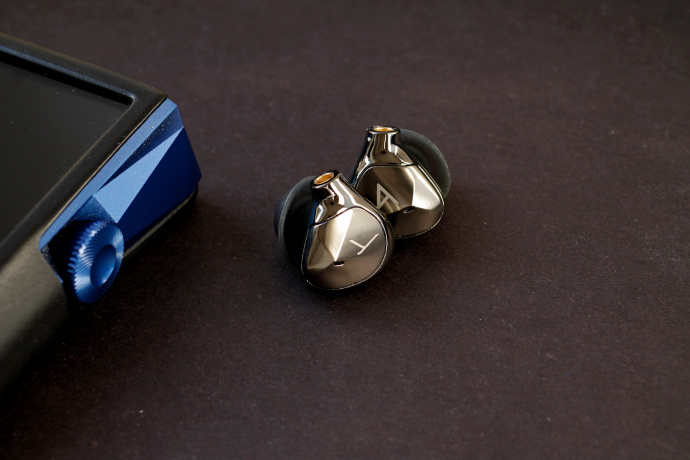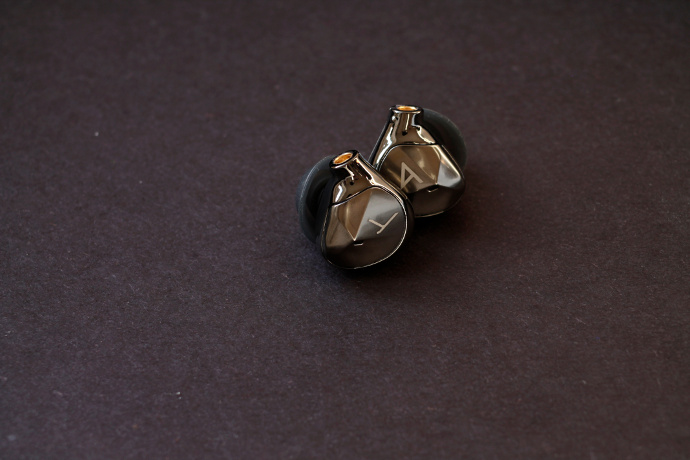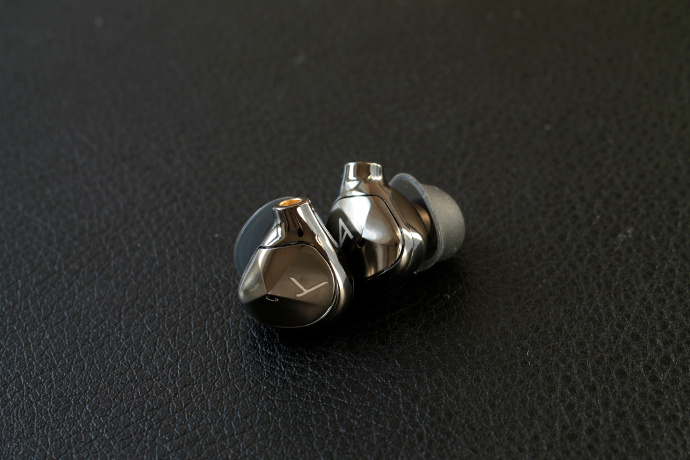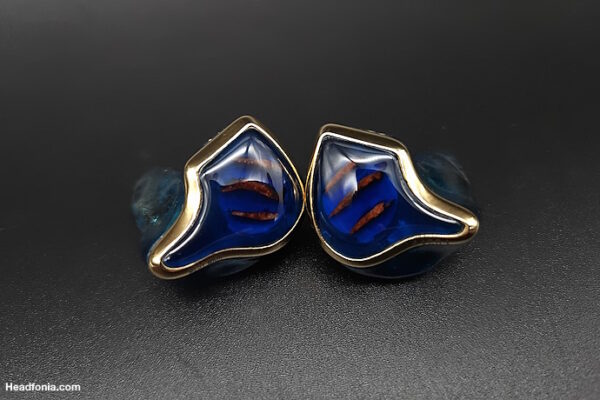Sound:
I am a fan of dynamic drivers and I absolutely loved the AK T8iE for its sound. Still, due to the fact that mine broke two months in, I sold the replacement pair unopened. The person that took it off my hands never reached out to me again, so I guess it didn’t break on him. When AK announced the AK T9iE as the successor of the AK T8iE I was highly interested in giving them a spin. Now, many months after the announcement I got the chance to spend considerable time with it. Big thanks to Astell&Kern!
The AK T9iE has a dynamic, full and nicely tight sounding bass. It reaches deep with good resolution, texture and rumble. The bass doesn’t feel too tight and light, it still possesses a good dose of naturalism with realistic attack and decay. The T9iE goes remarkably deep, and does so with very good punch. There is great sub-bass foundation in the sound, to give it a solid ground to stand on. When needed, it can also throw a mean punch. If you’re a fan of Björk’s Vulnicura album, I think you’d be very pleased with the performance of the T9iE.
The T9iE has great powers in terms of authority, punch, resolution and dynamics. It is decently fast, but I have heard better at that. However, it doesn’t struggle with very fast electronic genres either. It does not feel like it’s been overthrown by a big BPM count.
Midrange is solid on the T9iE. It is neutrally tuned, but with very good timbre. It stays true to the tone and sounds realistic. Instruments have very nice body and air, but there is something slightly conflicting for me. Some male vocals can sound unrealistically big in terms of body. I don’t get that with female vocals at all. They sound more correct in size and density.
There is good resolution and layering throughout the entire mid-frequencies. You get an evenly sized sound stage, with good width and depth. But to me it seems the T9iE handles depth better than width. Sometimes it seems that sounds coming from left or right are less stable than when they come from behind. Instruments are well separated, but I feel there could be some extra air around them, just to give them that bit more room.
The T9iE has good richness from top to bottom. Nothing sounds hard-edged or too analytically dry. Vocals transport nice emotions and have a good amount of flow. They don’t come across as too heavy or sticky. The AK T9iE has good body for the most part, with the only exception of male vocals as mentioned before.
Highs on the T9iE have decent extension. They don’t feel overly bright or harsh to me. Treble does have energy and very nice decay. Brighter instruments like Violins sound clear and natural. What the T9iE does not have is sibilance. S and Sh sounds come out clean and mostly soft. The AK does have a softer lower treble, and I think even treble-sensitive people could potentially enjoy them.
Overall, the T9iE has a rather neutral signature. If it does have a slight tendency towards a certain area, it’s probably bass. Bass heads might even enjoy it, as to me it’s a high quality low-end tuning. The T9iE does not have any issues with bad recordings, as it’s a more forgiving monitor, that covers the flaws.
Sources:
Most IEMs really don’t need any extra amplification, there are some exceptions, but the T9iE isn’t one of them. What it does though, is scale with better equipment. Sure, you can use your smartphone, but a higher quality source means higher quality sound here. Important for a good performance to me is always the noise level. The T9iE has absolutely zero issues with hiss, from any of my sources and amplifiers. Even some desktop gear didn’t produce any noticeable noise. That’s a big plus in my books.
Let’s check out some pairings.

Astell&Kern AK T9iE
Astell&Kern – SP1000M
An AK IEM should pair well with an Astell&Kern DAP, right? Right! For obvious reasons these seem to be working out nicely.
You get a well controlled and punchy low end, with excellent texture and resolution. Bass reaches deep with good rumble. The sub-bass has a nice dense sound to it, that gives it a very solid impression. Bass overall is dynamic, full and rich. It’s smooth and the body just right. You don’t get any bloom or bleed anywhere, which is good.
Mids are transparent, highly resolved and accurate. Instruments sound life-like with good body. It doesn’t seem to push into any direction, but keeps things neutral. Musicians are separated carefully and you get a nicely expanded sound stage. Although it seems that the T9iE again handles depth better than width. The stereo separation is good, but there still is room for improvement. Vocals sound a touch forward and are placed in the centre scene. Both male and female vocals have good body and weight.
Lower treble is a bit brighter and more forward sounding than with other gear. A point of critique for this pairing is micro-detailing. The T9iE doesn’t portray fine details clear enough. They often seem to fall behind other sounds and get covered up. This also results in a sub-optimal rendering performance. Imaging is good, but again, there is room for improvement here.

Astell&Kern AK T9iE
Lotoo – PAW Gold Touch
The Lotoo is a very good test-candidate for reviews. It features a reference type signature, where nothing gets boosted or tamed. It’s super-neutral and offers impressive flexibility. On top, it manages to handle any IEM in my inventory with ease. I can’t say that for all my DAPs.
With the PAW Gold Touch you get wonderful transparency and very high resolution. Bass is well defined, dynamic and punchy. However, it feels a bit looser than with other gear. Especially mid- and upper-bass can become too big. Body is grand-scaled but sometimes can be a bit light on density. Which gives it a slightly hollow appearance. Still, T9iE reaches low with impressive rumble and grunt. It throws a mean punch when needed, but sounds nicely organic with non-synthetic bass.
Midrange is rich, organic and of high quality. Instruments sound spot on and vocals have good emotions. There is good blood in each note and meat on the bones. Vocals sound a bit relaxed and sometimes even compressed with too high density.
Treble is soft and fast. You get a clear sounding top end with great extension. There’s no hint of sharpness or sibilance anywhere, which is always a good thing. When looking at technicalities the PGT pairing is a winner. The sound stage has nice dimensions on all axis and spreads well. Picture rendering is done very well with high precision. Instruments are separated carefully with a good dark background.
It continues on page three!








Daniel
The housing of T8iE was definitely NOT ceramic, but actually a plastic coated with metal.
Linus
Hi Daniel,
thanks for your comment.
That’s interesting, I always was under the impression that the T8iE was made of ceramic… Sorry for that, my mistake then! Thank you for pointing it out. Always good to gather new information. 🙂
Cheers
Daniel
Hi Linus, the AK T9iE isn’t ceramic either, and uses the same PVD finish as Xelento/T8iE as per their website. Would be lovely if it were ceramic.
Linus
Hi Daniel,
thanks again. Very helpful!
Have a great week and enjoyable holidays. 🙂
Mateo
How T9ie sound pair with SE100?.